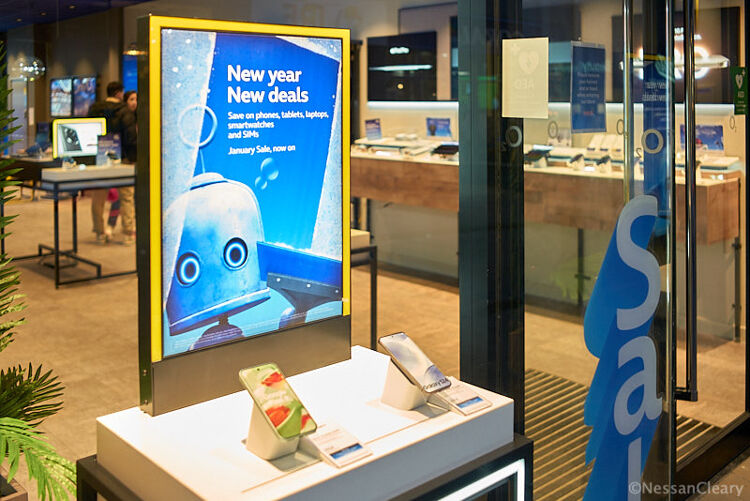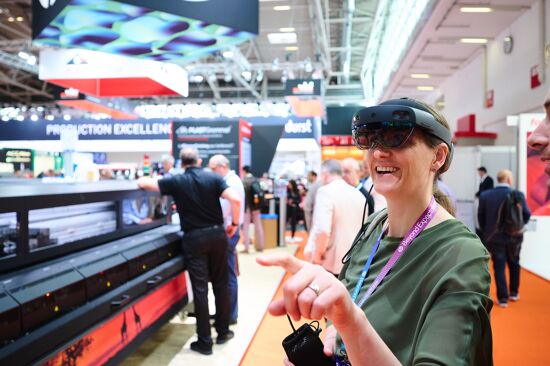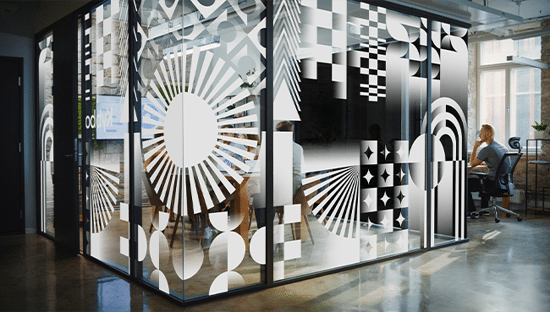The rise of digital screens

Nessan Cleary discusses the increasing use of digital screen in retail shops which have both pros and cons. They can be cost-effective with a variety of different technologies and resolutions that can be used and reduces the amount of short term printing required. However, they do require high amounts of energy to run. Nessan goes into further detail of the pros and cons in this article.
Take a walk along any small town high street and you will see plenty of display graphics, ranging from large images on perforated films to backlits and cling films with special promotions. And increasingly you might also notice a growing number of digital screens in amongst all the static graphics.
This proliferation of screens is not limited to large chains, with many small independent retailers also now installing their own displays. One of the main functions of any kind of shop window display is to persuade passersby to stop and go into the shop. Screens, with their dynamic content, can play an important role here in grabbing people’s attention, especially in the winter months when the sky is already dark by mid-afternoon and the bright screens really stand out.
 Caption: Digital screens continue working even when the shop is closed. Credit: Nessan Cleary.
Caption: Digital screens continue working even when the shop is closed. Credit: Nessan Cleary.
A large multi-screen set-up can be quite expensive, but adding a single digital screen to a shop window can be reasonably cost-effective, especially if it leads to an increase in footfall. It can also lead to a saving on print costs, depending on how often the retailer refreshes their printed displays over the course of a year. However, users should also factor in the energy consumption as the screen will likely be on constantly day and night. There will also be some cost for maintenance over the lifespan of the screen, with most screens having a three to five year warranty.
The advantage of placing the screen inside the window is that it does not have to be hardened to cope with bad weather or the risk of vandalism, though it should be able to withstand heat and direct sunlight. This includes the notorious blackening effect, which is caused by direct sunlight over time, so it’s important to check what measures the screen has to resist this.
Typically most retailers use a single flat screen, in some cases double-sided, surrounded by conventional graphics. Double-sided screens should be able to display different content on either side. These screens do not have to be particularly big, which also helps to keep the cost down. The screen sizes used for window displays typically range between 32 and 86 inches with 49ins being the average.
There’s a choice of different technologies and resolutions. Until recently the dominant technology was liquid crystal displays or LCDs, but this is now giving away to ight emitting diodes or LEDs. These are more energy efficient and offer higher brightness levels as well as sharper images and wider colour gamuts. Naturally LED screen are more expensive though prices are coming down as supply catches up with demand. In either case, these are industrial screens that are designed to be continuously in use, unlike a domestic TV.
There are a number of features to consider. Perhaps the most important is the brightness level as a screen in a window will have to compete with whatever ambient light is around. Brightness can be measured in either Candelas per square metre, which is the intensity of light emitted in one direction, or Nits, which is the light output in any direction. There’s little practical difference between the two, which can be quoted more or less interchangeably so that 700 cd/m2 is for all intents and purposes the same as 700 nits and so on.
 Caption: Digital screens can be combined with printed graphics. Credit: Nessan Cleary.
Caption: Digital screens can be combined with printed graphics. Credit: Nessan Cleary.
Ideally an exterior facing screen should be capable of producing up to 700 nits though there are high brightness screens capable of 3000 nits of brightness, and some can go up to 5000 nits. How much brightness is necessary depends on the installation and whether or not the window is facing direct sunlight. The screen should incorporate an automatic brightness control to cope with changes in the natural lighting outside in order to save on energy usage on dull days or during the night. Ideally there should also be an integrated temperature control system to prevent the screen from overheating. Another requirement is high resolution, which should be at least equivalent to High Definition, or 1080p video with some screens now offering up to 4K resolution.
The most common installation is to suspend the screens via two steel cables from the ceiling, with two more cables from the bottom of the screen to the floor to anchor them and prevent any movement. This makes it easy to place a screen into just about any standard shop window, and to adjust the height of the screen to match the average eye level of passersby. The power cable can then run down beside on the cables. Other alternatives include using a pole or a cabinet.
The other advantage to retail customers of using a digital screen is the ease of use compared to printed graphics. Once it’s installed it can be left to run on its own with no need to train the shop staff on how to physically install the graphics. The screen should include a content management system or CMS. These typically use an android-based player so that the content can be easily updated. The content itself can cycle between static images, for example, of individual products or offers, or even include videos and animations. Most retailers use their screens to highlight special offers or new products.
The content can be supplied via a USB stick but increasingly many retailers, particularly chains, will use a WiFi connection linked to a central hub so that all the shops in a given region can be updated simultaneously. This means that the retailers can react very quickly to changing prices or supply shortages. However, many suppliers will charge additional fees for access their cloud portal.
Clearly digital screens won’t replace the range of static graphics in most shop windows and there will still be a place for backlit and multi-layer printing. But this screens will cut down on the amount of short term printing that is required. So any wide format printers that supply the retail market, particularly with window graphics, should consider adding a digital screen option to their arsenal and working with customers to help them get the best mix of technologies for their windows.
Discover the latest innovations in digital signage at European Sign Expo 2025, Europe's leading signage and visual communications exhibition taking place from 6 – 9 May at Messe Berlin, Germany. It will showcase cutting-edge products, visionary concepts, and transformative developments shaping the future of signage. Register your interest here.
Interested in joining our community?
Enquire today about joining your local FESPA Association or FESPA Direct
Recent news

Streamlining personalisation with tech: Insights from the SmartHub Conference 2025 speakers
Personalisation Experience 2025 (6 – 9 May 2025, Messe Berlin, Germany) is running its inaugural SmartHub Conference from 6 – 8 May 2025.

Special Effects in DTF: How Neon Inks Are Making Apparel Pop
Neon fluorescent inks are the latest innovation in DTF printing, offering vibrant, eye-catching effects under both daylight and UV light, giving apparel decorators a competitive edge. Testing shows good wash durability, though market perception of added value is still developing. With increasing adoption and ongoing technological advancements, neon represents a significant upgrade for creative customisation.

Unlocking Growth Opportunities in the Printed Personalised Apparel Industry
The printed personalised apparel industry is booming, projected to reach $10.1 billion by 2030. Driven by consumer desire for self-expression and branding needs, technological advancements like DTG/DTF and e-commerce integration are key. Sustainability, eco-friendly materials, and on-demand printing are crucial growth drivers. Businesses leveraging these trends, including AI and social media, have significant commercial potential.

How to grow your business with white ink applications
Opaque white ink is revolutionising signage, vehicle graphics, wallcoverings, short-run and wood packaging, and window blinds by enhancing vibrancy and clarity. This enables printers to offer high-demand, standout products, boosting profit margins. HP Latex white ink applications and their large format printing solutions will be showcased at FESPA 2025 in Berlin.